BMW, a marque synonymous with precision engineering, driving pleasure, and premium luxury, has long stood as one of the world’s most revered automotive brands. From its early days as a manufacturer of aircraft engines to its modern-day status as a luxury powerhouse, BMW has built a legacy defined by performance, innovation, and style.
Yet, despite the brand’s consistent focus on cutting-edge technology and driver-centric dynamics, the durability and longevity of BMW models vary significantly across its storied history. Some BMWs have proven to be timeless classics, aging gracefully with minimal issues while maintaining their charm and mechanical integrity.
Others, while exhilarating to drive and packed with advanced features, unfortunately develop reputations as “mechanic magnets”—cars that demand frequent repairs and costly maintenance, often due to complex engineering or design choices that push the limits of reliability.
Understanding which BMWs age gracefully and which become mechanical headaches is essential for enthusiasts, collectors, and prospective buyers alike. It’s a lesson in automotive evolution, highlighting the delicate balance manufacturers must strike between performance, innovation, and long-term dependability.
The allure of a BMW is often wrapped in its engineering prowess and driving dynamics, but the realities of ownership can vary widely depending on the model and era. As BMW introduced turbocharging, electronic systems, and increasingly sophisticated engine management, the risk of mechanical complexity and associated maintenance challenges grew.
Conversely, earlier or well-engineered models—those with simpler designs and proven mechanical components—have often outlasted their more technologically advanced siblings, earning admiration for their reliability and longevity.
In this article, we explore two contrasting facets of BMW ownership: five models renowned for aging gracefully, and five models notorious for requiring frequent mechanical attention. The “age gracefully” list showcases BMWs celebrated for their robust engineering, mechanical simplicity, and the passionate communities that have preserved them over the decades.
These cars often feature engines and chassis designs that withstand the test of time, with maintenance that is manageable and parts that remain accessible. They embody the core BMW philosophy of driving enjoyment without constant worry about breakdowns or escalating repair bills.
On the other side, the “mechanic magnets” are models that, despite their initial appeal and performance capabilities, have struggled with reliability issues ranging from engine troubles to electrical gremlins and complex suspension failures. These BMWs serve as cautionary tales of the challenges introduced by pushing technological boundaries too far, too fast.
Whether due to the twin-turbocharged engines prone to high-pressure fuel pump failures, intricate variable valve timing systems, or sensitive electronic controls, these cars tend to keep their owners tethered to the mechanic’s shop more often than any driver would like.
However, even these problematic models hold a certain fascination, as their engineering complexity and performance potential often continue to attract dedicated enthusiasts willing to invest time and money into maintaining them.
Through a detailed look at these ten models, we aim to provide insight into BMW’s engineering evolution and ownership experience. We delve into what makes certain BMWs timeless, combining durable mechanical components, balanced chassis design, and community support, while also examining the factors that lead other models down a more troublesome path.
For anyone considering a BMW—whether as a daily driver, a weekend toy, or a collectible investment—knowing the history of these models helps in making informed decisions, balancing passion with practicality. BMW’s journey reflects both the triumphs and challenges of automotive innovation, reminding us that behind every badge is a story of engineering trade-offs, owner devotion, and the relentless pursuit of the ultimate driving machine.
Also Read: 5 Cabin Air Filters Placed For Easy Access And 5 That Require Disassembly
5 BMWs That Age Gracefully
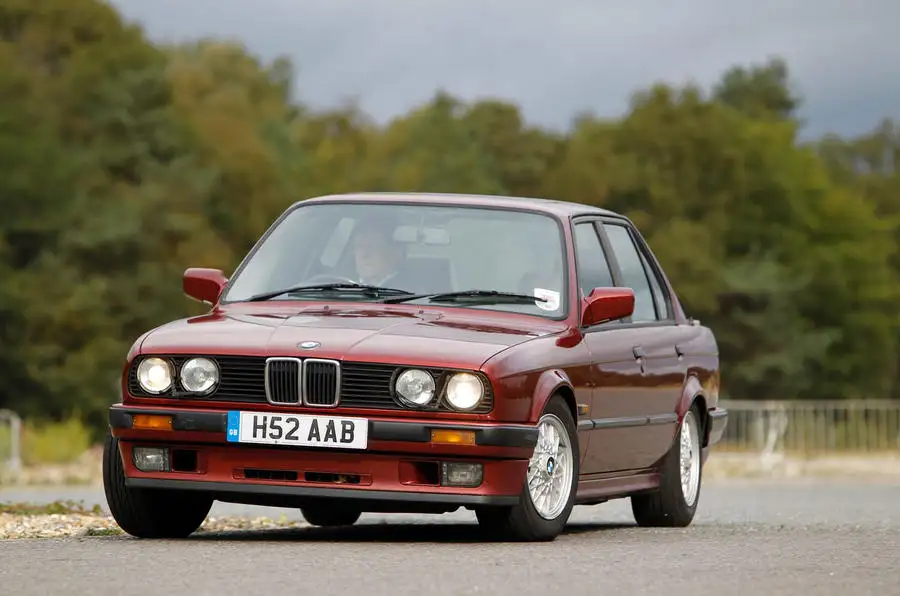
1. BMW E30 3 Series (1982–1994)
The BMW E30 3 Series is a true icon in the automotive world, widely regarded as one of the best compact sports sedans ever built. It’s a car that perfectly encapsulates the essence of what BMW stands for—precision engineering, balanced handling, and driver engagement.
One of the reasons the E30 ages so well lies in its mechanical simplicity and robust construction. Unlike modern cars loaded with complex electronics and infotainment systems, the E30 boasts relatively straightforward mechanical components, which makes it less prone to the types of failures that plague later models.
Its inline-four and inline-six engines are durable, especially the M20 and M42 units, which, when maintained regularly, can run smoothly for hundreds of thousands of miles. The gearbox options, including the timeless Getrag manuals, are well-known for their reliability and engaging feel, further adding to the car’s appeal.
The chassis design of the E30 is another factor contributing to its longevity. Built with a focus on rigidity and balance, the E30’s handling characteristics have become the gold standard for driver-focused sedans. Even today, the car’s nimble, responsive steering and near-perfect weight distribution provide an exhilarating driving experience that rivals many modern sports cars.
Moreover, the body panels and chassis components were manufactured using durable materials that have proven resilient against rust and corrosion, a common Achilles’ heel for many older vehicles. Enthusiasts often remark on how an E30 that has been cared for properly can still look and feel remarkably fresh, preserving the original driving experience.
Additionally, the cultural and community support around the E30 cannot be overstated. There is an active, global network of clubs, forums, and aftermarket suppliers dedicated to keeping these cars on the road. This extensive ecosystem ensures that parts remain affordable and accessible, repairs are well-documented, and owners can source expertise easily.
This support system contributes heavily to the E30’s ability to age gracefully, as it encourages owners to maintain and restore these cars rather than abandon them. Collectors and hobbyists alike view the E30 as a timeless classic, a car that rewards patient stewardship with enduring performance, style, and emotional connection.

2. BMW E39 5 Series (1995–2003)
The E39 5 Series is often hailed as the pinnacle of BMW’s engineering in the executive sedan category, blending sophisticated design, refined powertrains, and a level of build quality that was unmatched at the time. It was a critical moment in BMW’s history where the company successfully integrated advanced technology while maintaining mechanical integrity and reliability.
The powertrain options, particularly the inline-six M54 engine and the V8 M62, are praised for their solid engineering and longevity when maintained correctly. These engines are known for their smoothness, responsiveness, and relative mechanical simplicity compared to turbocharged units that came later.
With routine maintenance, such as regular oil changes, cooling system upkeep, and timing component replacement, these engines have proven to be long-lasting powerplants capable of covering high mileage without significant issues.
What sets the E39 apart is its remarkable chassis and suspension tuning that created a benchmark for balance between comfort and agility. The car offered a supple ride, thanks to well-designed multi-link rear suspension and sound-damping techniques, while still delivering sharp handling and precise steering.
This dual personality has helped the E39 retain its appeal among both luxury car buyers and driving enthusiasts. The interior was also crafted with high-quality materials that were durable enough to withstand the passage of time without excessive wear. Leather seats, wooden trims, and solid plastics combined to create an upscale cabin that still feels special decades after manufacture.
Furthermore, the E39 benefits from strong aftermarket support and a well-established owner community. This has contributed to the preservation of many examples, especially the M5 variant, which is celebrated for its naturally aspirated V8 and legendary performance.
Parts remain relatively accessible and affordable, and many independent shops specialize in servicing this model, reducing the reliance on costly dealership repairs. Owners frequently remark that with proper care, the E39 doesn’t just survive; it thrives, maintaining excellent driving dynamics and a sense of presence on the road. It remains a symbol of BMW’s golden era, a car that ages gracefully by marrying classic luxury with timeless engineering.
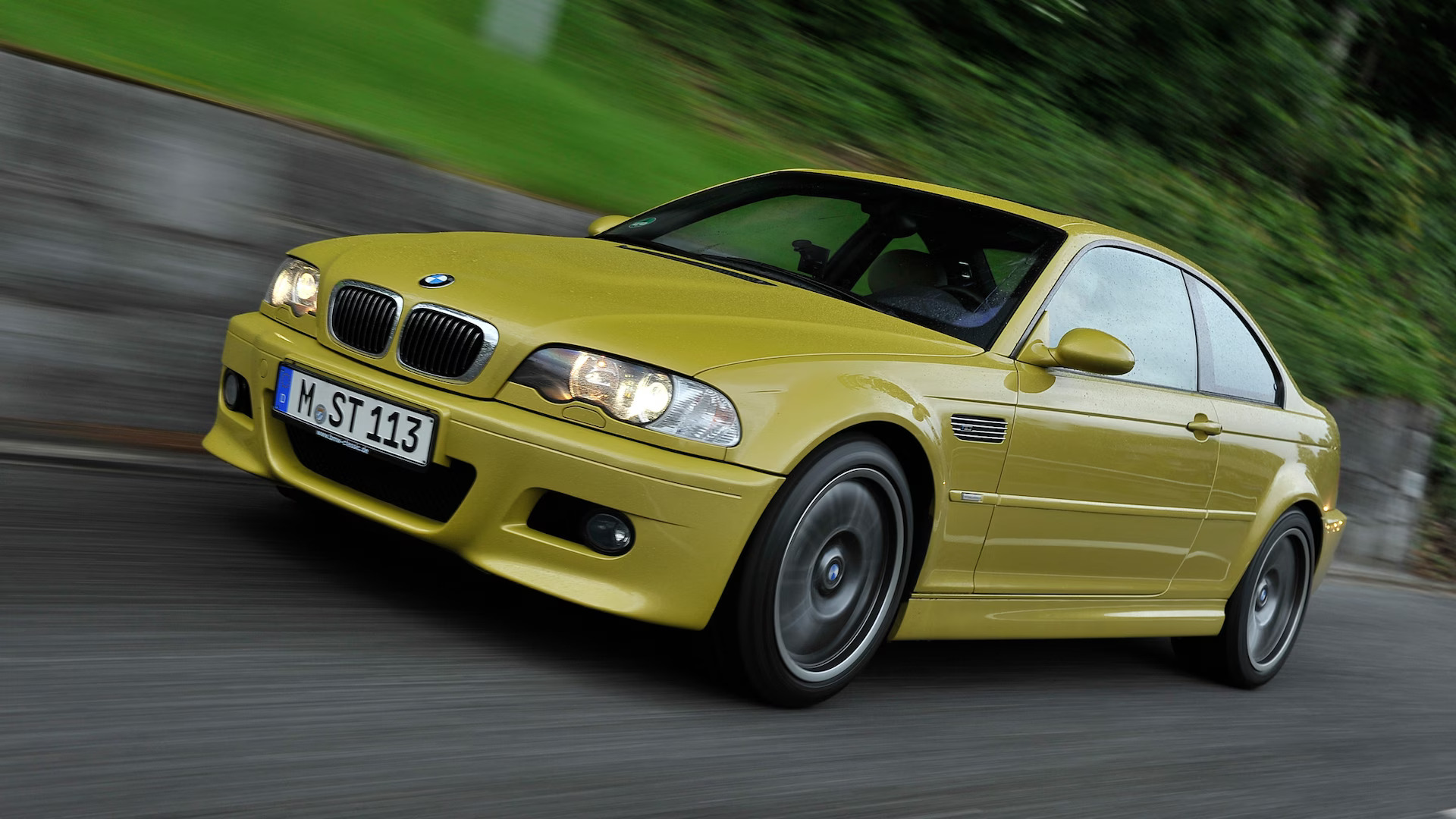
3. BMW E46 3 Series (1998–2006)
The BMW E46 generation is often described as the perfect middle ground between the raw, analog driving feel of earlier models and the onset of modern technology integration. It struck a fine balance, retaining driver-focused dynamics while incorporating refinements in suspension, chassis tuning, and engine management that elevated the driving experience.
The inline-six engines, particularly the M54, became known for their excellent reliability and smooth power delivery, as long as owners stayed vigilant about maintenance intervals. Unlike some turbocharged engines that came later, the naturally aspirated inline-six engines in the E46 are less prone to carbon buildup and turbo-related failures, contributing significantly to their longevity. When properly cared for, these powertrains can continue to deliver strong performance and responsiveness well beyond 200,000 miles.
The chassis and suspension of the E46 were praised for their precise handling and composure, attributes that remain highly sought after even in today’s sports sedans. Lightweight construction combined with a well-tuned suspension allowed the E46 to remain agile and fun to drive, preserving the classic BMW driving feel.
Its steering was direct and communicative, providing confidence and feedback that many modern electronic systems struggle to replicate. The car’s relatively conservative yet elegant styling has also aged well, with clean lines and balanced proportions that have become timeless. Inside, the materials used were of a high standard for the era, and many examples show minimal signs of wear even after years of use.
Moreover, the E46 enjoys one of the most passionate and active enthusiast communities in the BMW world. Countless forums, clubs, and dedicated websites exist to support owners in maintenance, upgrades, and restorations. Replacement parts are widely available, ranging from OEM to aftermarket options, keeping costs reasonable and repairs manageable.
This vast support network fosters a culture of preservation and enthusiasm that ensures many E46s continue to thrive on the roads. For drivers seeking a BMW that delivers classic dynamics without excessive mechanical headaches, the E46 remains a top contender for a model that truly ages gracefully.

4. BMW 2002 (1968–1976)
The BMW 2002 is more than just a car—it’s a milestone that helped shape BMW’s reputation as a maker of sporty, driver-centric vehicles. It laid the foundation for the brand’s future by embodying simplicity, mechanical robustness, and an engaging driving experience that still resonates with enthusiasts today.
The 2002 naturally aspirated inline-four engine is known for its straightforward design, making it easier to maintain and less prone to catastrophic failure. Early models used carburetors, which are simple to tune and repair, while later fuel-injected variants improved efficiency and drivability without compromising durability. This mechanical simplicity is a key factor in why many 2002s survive today in excellent condition, often with original parts and minimal rust issues.
In addition to its reliable engine, the 2002 was built with a chassis designed to be lightweight and responsive. The car’s compact dimensions and balanced weight distribution gave it nimble handling characteristics that continue to be praised in classic car circles.
The suspension setup, though simple by today’s standards, was effective and durable, often requiring only routine maintenance to remain sharp. The mechanical brakes and manual steering further contribute to the direct and engaging driving feel that has made the 2002 a cult favorite for decades.
Finally, the 2002’s timeless design and cultural significance elevate its status as a car that ages gracefully. Its iconic boxy shape and minimalist yet purposeful aesthetic have proven remarkably resilient to changing automotive trends. Many collectors and enthusiasts actively restore and preserve 2002s, ensuring that the legacy of this classic lives on.
The car represents a period when BMW prioritized driving enjoyment and mechanical purity, qualities that continue to endear the 2002 to those who value cars that grow in character and appreciation with age.
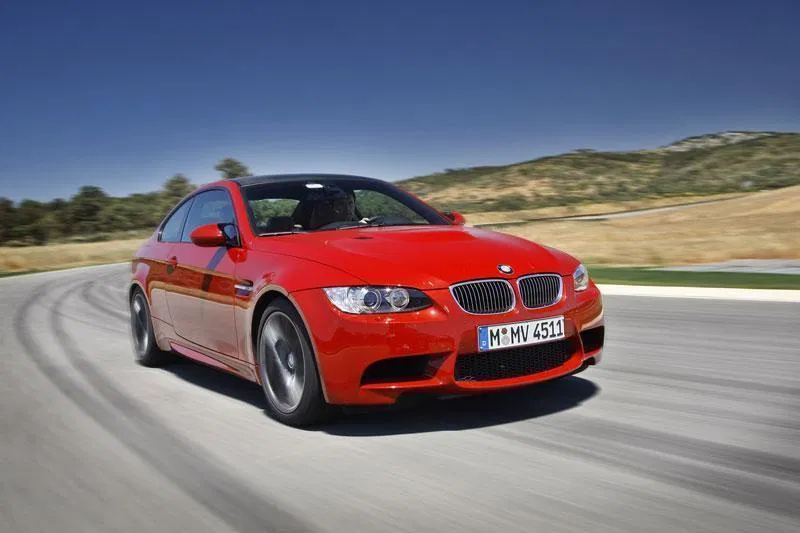
5. BMW E92 M3 (2007–2013)
The E92 M3 represents a modern take on BMW’s tradition of high-performance sports cars, blending cutting-edge engineering with a reputation for relative reliability in the M lineup. Powered by the naturally aspirated 4.0-liter S65 V8 engine, the E92 M3 offers an exhilarating driving experience characterized by high-revving excitement, linear power delivery, and a distinctive engine note that sets it apart from turbocharged rivals.
While the S65 is a more complex engine than many classic BMW powerplants, it benefits from robust engineering and advanced materials that contribute to its durability. Regular maintenance, including oil changes with high-quality synthetic oil and timely valve adjustments, is essential but straightforward for this engine to thrive over the long term.
The chassis and suspension of the E92 M3 were designed to deliver razor-sharp handling and an engaging driver experience. Featuring a sophisticated multi-link suspension and optional adaptive dampers, the car remains remarkably composed and communicative, traits that have aged well in an era increasingly dominated by electronic aids.
The E92’s relatively lightweight construction, compared to heavier modern performance cars, preserves the tactile feel that BMW enthusiasts cherish. Its aggressive yet tasteful styling continues to be admired, striking a balance between modern aesthetics and classic M design cues.
Beyond its mechanical strengths, the E92 M3 benefits from an active aftermarket and strong enthusiast community, which helps owners maintain and upgrade their cars efficiently. Many enthusiasts view the E92 as a modern classic—a car that represents the peak of naturally aspirated V8 performance in the BMW lineage.
While maintenance costs are higher than older models, the payoff is a car that delivers thrilling performance without the frequent mechanical headaches associated with some turbocharged BMWs. For those seeking a modern BMW that ages gracefully, the E92 M3 stands as a shining example.
5 BMWs That Are Mechanic Magnets
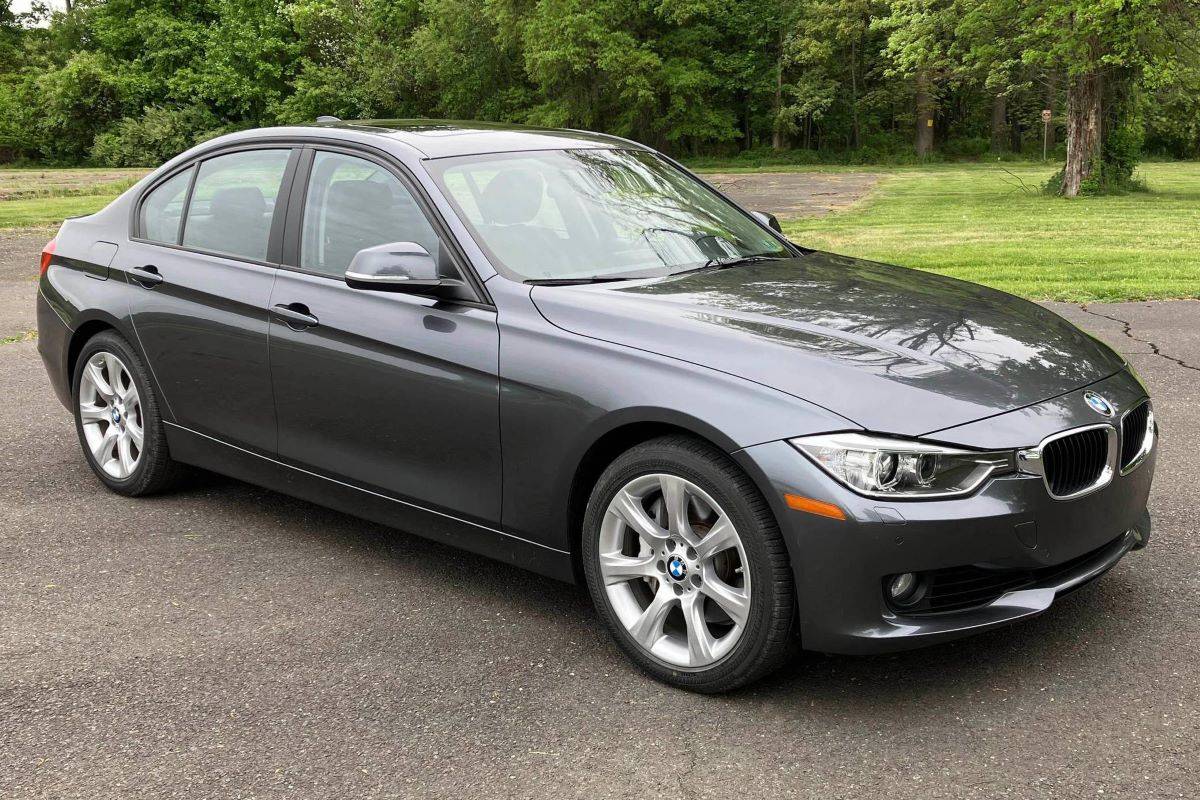
1. BMW N54 3 Series (2007–2013)
The BMW N54 engine, found primarily in the 335i from 2007 to 2013, is a prime example of a technological marvel that became a mechanical headache. When it was introduced, the N54 was celebrated for its impressive twin-turbocharged setup that delivered exhilarating power and responsiveness far beyond its naturally aspirated predecessors. Enthusiasts adored its potential for tuning and performance upgrades, making it a favorite among the tuner crowd.
However, beneath the excitement lay a slew of recurring issues that quickly earned it the infamous label of a “mechanic magnet.” The high-pressure fuel pump (HPFP) was one of the most problematic components, often failing prematurely and leading to sudden loss of power or complete engine shutdowns. This issue became so widespread that BMW issued multiple recalls and extended warranties in an attempt to contain the fallout.
In addition to the HPFP woes, the N54 suffered from turbocharger wastegate rattles, which not only affected performance but also caused a distracting noise that many owners found irritating. Another serious and often expensive problem was carbon buildup on the intake valves—a consequence of the direct injection system that, while improving efficiency, left deposits that reduced engine smoothness and power over time.
Cleaning these valves usually requires a labor-intensive walnut blasting procedure, adding to maintenance complexity. Beyond engine-specific troubles, owners of N54-powered 3 Series vehicles also frequently experienced cooling system failures, including water pump and thermostat breakdowns, which, if ignored, could lead to costly overheating and engine damage.
The complexity of the N54 engine, with its twin turbos, direct injection, and intricate cooling system, means that repairs are often expensive and time-consuming. Even routine maintenance demands more specialized knowledge and parts than older BMW engines.
As a result, the N54 models often require a highly attentive and knowledgeable owner willing to stay on top of preventative maintenance and repairs. Without such diligence, these cars quickly become expensive to own, with visits to the mechanic becoming routine. Despite its impressive performance credentials, the N54’s maintenance challenges make it a textbook example of a BMW that attracts constant mechanical attention and high repair costs.
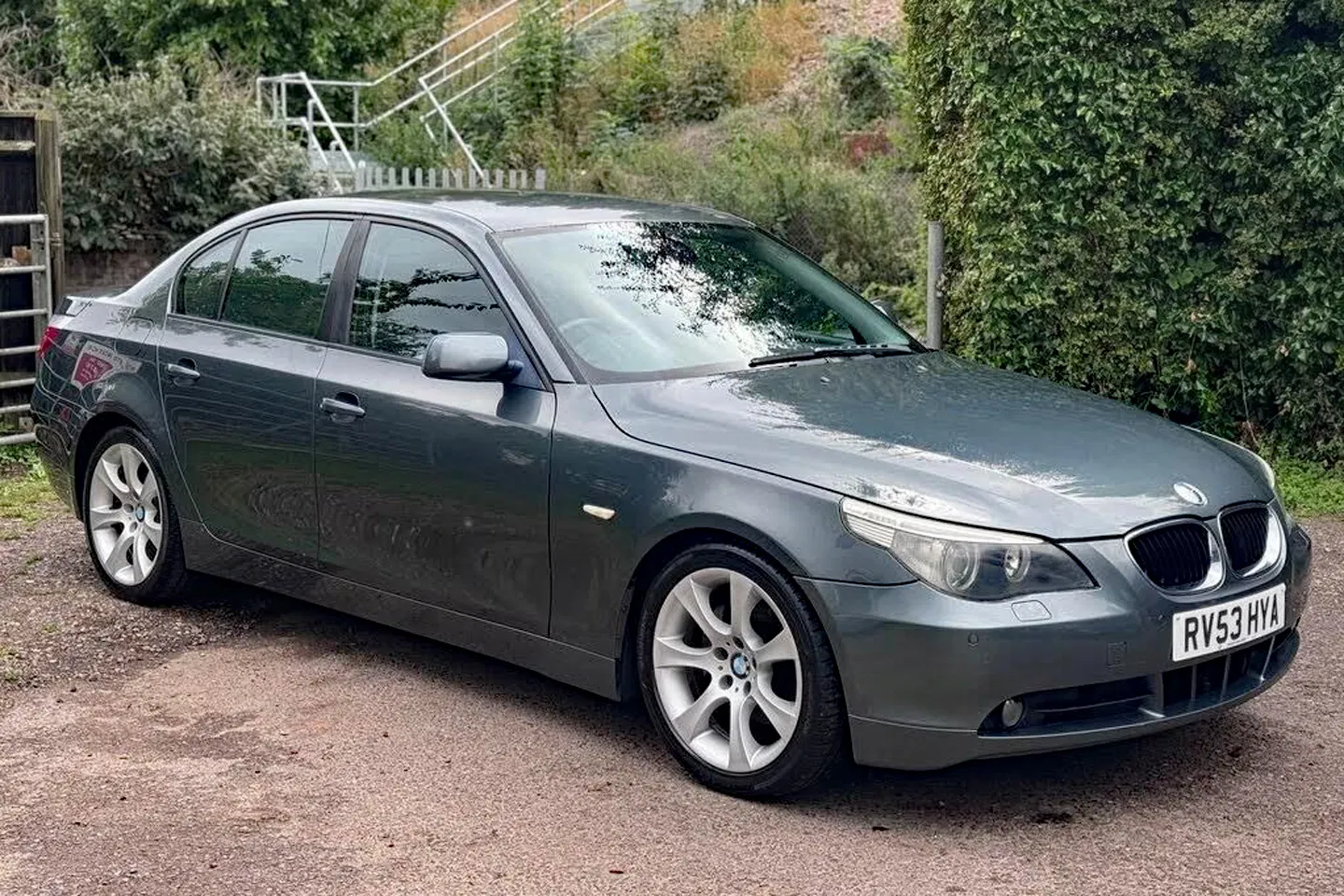
2. BMW E60 5 Series (2003–2010)
The E60 5 Series was a bold step for BMW, representing a departure from conservative styling to a more futuristic, sometimes polarizing design by Chris Bangle. While its aesthetics sparked debate, the car’s biggest issues stemmed from its mechanical and electrical reliability.
The E60 introduced many new technologies, including an upgraded iDrive infotainment system, active steering, and advanced safety features, but these systems often proved to be sources of frustration for owners. Electrical problems were rampant, ranging from failing window regulators and malfunctioning door locks to glitches with the complex iDrive system itself. These issues not only impacted convenience but also added up to costly trips to the dealer for diagnostics and repairs.
Mechanically, the E60 was plagued by engine-related problems that significantly affected its reliability reputation. The VANOS variable valve timing system, especially on the inline-six engines, was prone to failure or sticking, which caused rough idling, loss of power, and poor fuel economy. Many owners also dealt with persistent oil leaks from valve cover gaskets and other seals, which, if neglected, could lead to more severe engine damage.
Cooling system issues were common as well, with water pump failures and radiator leaks creating overheating risks that necessitated expensive repairs. The V8 engines, while powerful, were not immune to these problems and demanded rigorous maintenance to stay healthy.
Suspension components in the E60 added to the maintenance burden. The multi-link rear suspension, though designed for excellent handling, had a reputation for premature wear of bushings and ball joints, leading to costly replacements. Some models also suffered from air suspension failures, which are notoriously expensive to fix.
The combined effect of these mechanical and electrical issues meant that many E60 owners found themselves frequently visiting mechanics, often facing bills that undermined the car’s premium status. The E60 stands as a cautionary example of a BMW that pushed technological boundaries but at the cost of reliability and owner peace of mind.
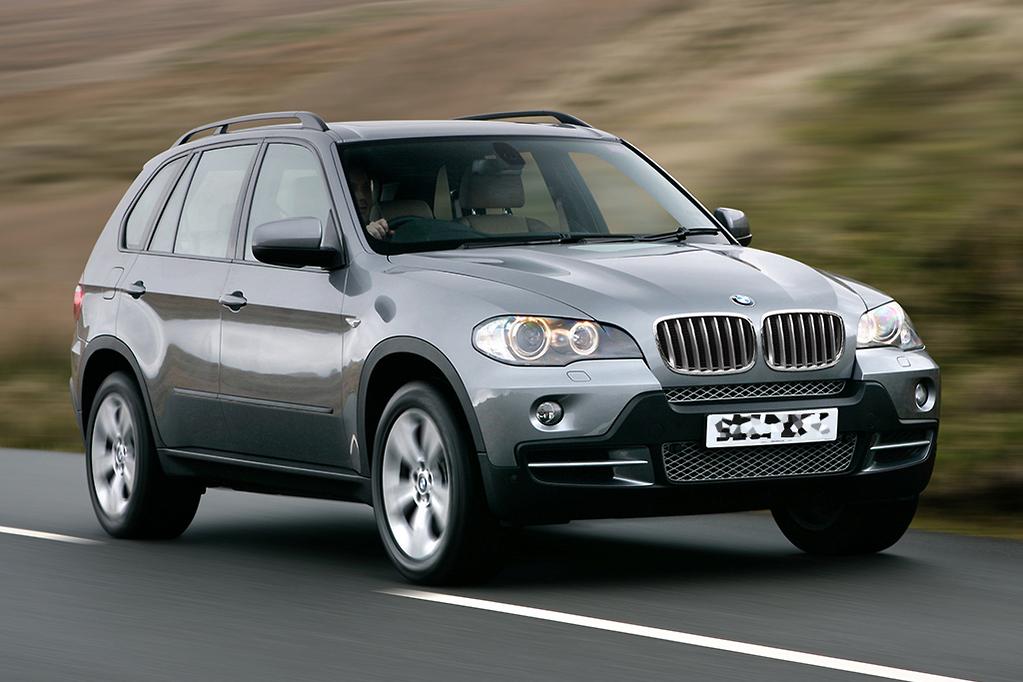
3. BMW X5 E70 (2007–2013)
The E70 generation of the BMW X5 was ambitious, bringing a luxury SUV experience with sporty handling and a suite of advanced features. However, this model quickly became infamous for its reliability problems that turned ownership into a costly affair.
One of the most frequent complaints revolves around the cooling system, specifically the electric water pumps and thermostat housings that are prone to premature failure. When these parts fail, overheating can occur rapidly, risking serious engine damage and necessitating expensive repairs or even engine replacements if neglected. Owners also report issues with the radiator and coolant hoses, further compounding the cooling woes.
Air suspension failures are another Achilles’ heel of the E70 X5. Many models equipped with the optional air suspension system suffer from leaks or compressor failures that lead to sagging or uneven ride height. These repairs are costly due to the price of replacement air springs and compressors, as well as the labor involved.
Electrical system glitches, including problems with the central electronic module and navigation system, have also been a frequent source of frustration. From faulty sensors to malfunctioning electronic control units, these issues often require dealer-level diagnostics and repairs, adding to ownership headaches.
The combination of these mechanical and electronic problems means the E70 X5 often requires a heavy investment in maintenance to keep it running reliably. While the car offers luxury and performance that was ahead of its time, its mechanical frailties and high repair costs have earned it a reputation as a mechanic magnet among luxury SUV buyers.
Owners seeking a dependable SUV often find themselves wary of the E70’s reputation, highlighting the challenges BMW faced in balancing innovation with durability during this era.
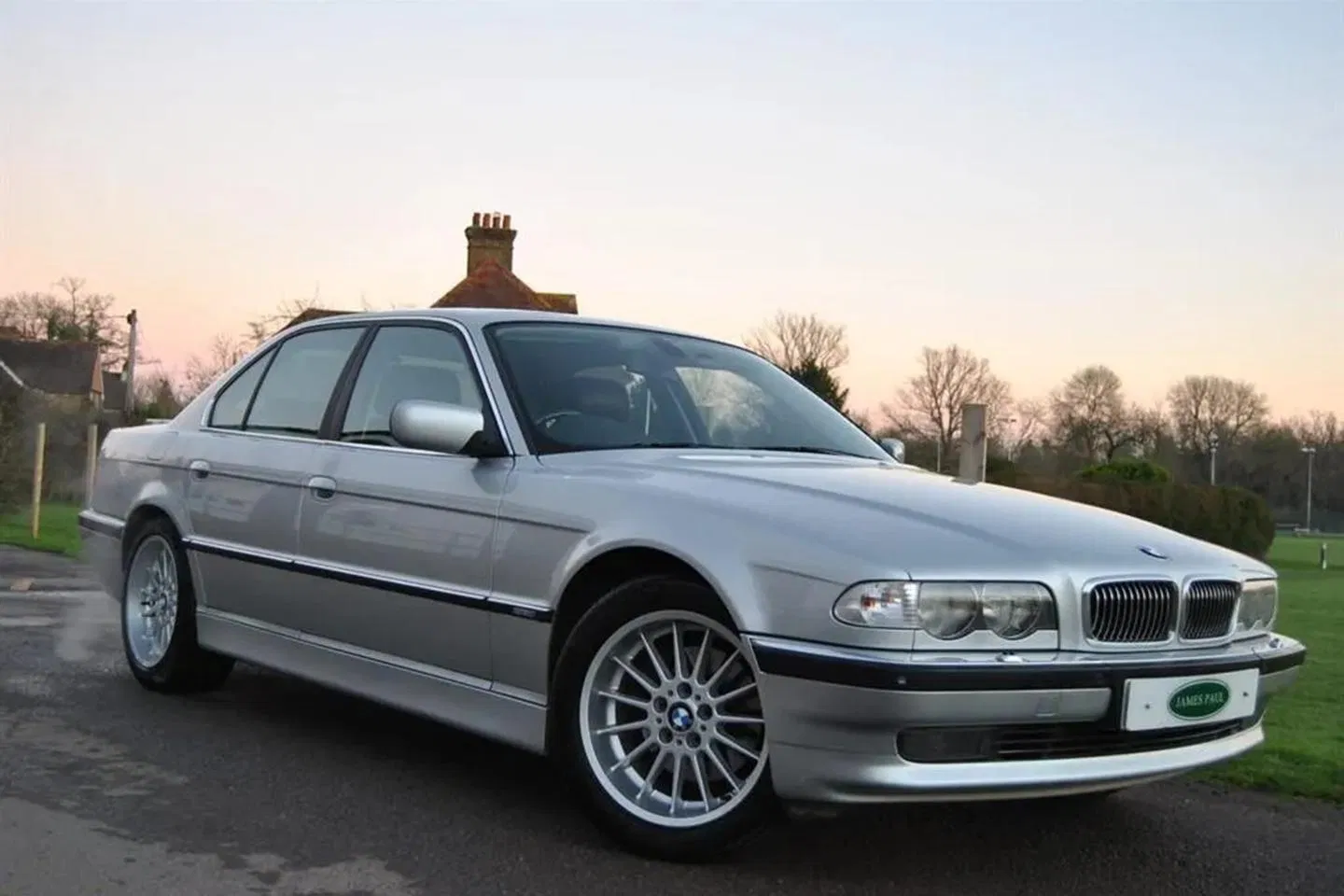
4. BMW N62 V8 Engines (2001–2010)
The N62 V8 engine powered a range of BMW models, including the 5 Series, 6 Series, and 7 Series throughout much of the 2000s. Despite its impressive performance characteristics, the N62 became synonymous with a host of reliability issues that have frustrated owners and mechanics alike.
One of the engine’s biggest weaknesses lies in its complex variable valve timing and Valvetronic systems, which rely on precise hydraulic controls. Failures in these systems often cause rough running, loss of power, and check engine lights, leading to expensive diagnostic and repair procedures. The intricacy of these systems means that many issues require specialized knowledge and tools to fix correctly.
Oil leaks are another persistent problem with the N62. Valve cover gaskets, oil pan seals, and rear main seals frequently develop leaks that can be messy and difficult to repair. Ignoring these leaks can result in low oil levels, risking severe engine damage.
Coolant leaks and water pump failures are also common, which, if unchecked, can cause overheating and subsequent head gasket or engine block damage. These issues combine to create a maintenance nightmare that many owners face, often encountering costly repairs that erode the enjoyment of owning a luxury BMW V8.
Beyond engine-specific problems, vehicles powered by the N62 often suffer from electrical gremlins, including sensor failures and wiring issues that affect drivability and diagnostics. Suspension components on these heavier cars also tend to wear prematurely due to the engine’s added weight, leading to more frequent replacements of bushings, control arms, and shocks.
While the N62 was a technological achievement in terms of performance and smoothness, it became a textbook example of how complexity can lead to costly and frequent mechanical failures, solidifying its reputation as a mechanical magnet in BMW’s lineup.
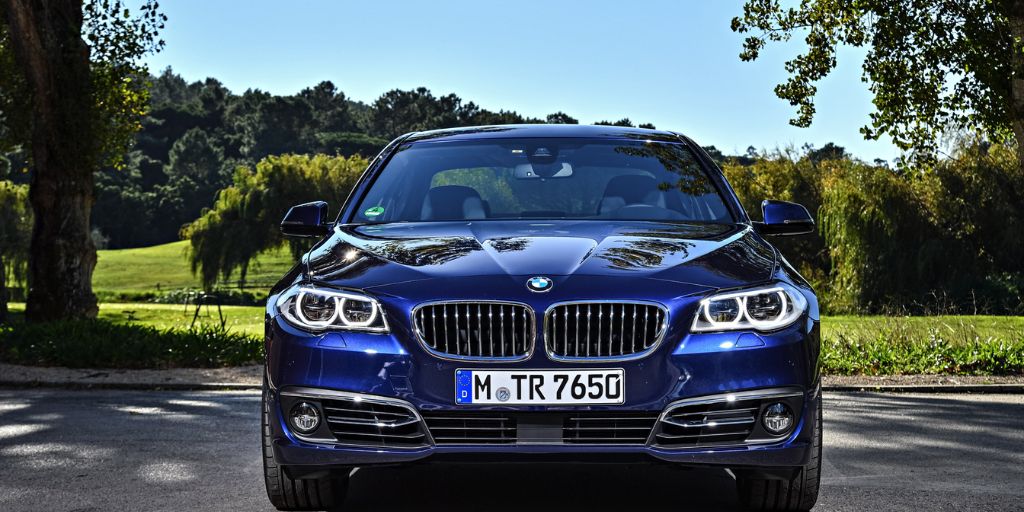
5. BMW F10 5 Series (2010–2016)
The F10 5 Series, representing the sixth generation of the 5 Series, combined contemporary styling, advanced technology, and a variety of turbocharged engines. However, this generation quickly became known for a series of reliability and maintenance issues that dampened owner satisfaction. One of the primary concerns was engine reliability, especially in the turbocharged four-cylinder and six-cylinder variants.
The N20 four-cylinder engine, in particular, suffered from timing chain guide failures that could lead to catastrophic engine damage if not addressed promptly. The turbocharged six-cylinder engines also faced problems with fuel injectors, high-pressure fuel pumps, and carbon buildup in the intake valves, making maintenance more expensive and complicated.
The F10 also experienced transmission-related issues, particularly with the ZF 8-speed automatic gearbox. Owners reported rough shifting, delayed engagement, and occasional failure of mechatronic units that required costly repairs or replacements.
These problems could significantly impact drivability and lead to unplanned service visits. Additionally, the vehicle’s complex electronics introduced a host of smaller but persistent issues, such as iDrive system malfunctions, sensor failures, and battery drain problems that could be difficult to diagnose and fix.
The integration of cutting-edge technology, while impressive on paper, resulted in a car that was often at odds with long-term reliability. Many F10 owners found themselves frequenting mechanics and specialists for recurring issues, leading to high maintenance costs that challenged the brand’s reputation for durability.
While the F10 remains a compelling choice for those seeking modern luxury and performance, its tendency to attract mechanical problems makes it a classic example of a BMW that can become a mechanic magnet if not meticulously maintained.
Also Read: 5 Windshield Washer Systems That Always Work And 5 That Clog Instantly
The story of BMW is one of engineering excellence intertwined with the complexities that come from pushing automotive technology to new heights. Throughout its history, BMW has crafted vehicles that inspire drivers with their precision handling, powerful engines, and luxurious touches.
Yet, as with any automotive brand, the durability and reliability of these cars vary greatly depending on the model, era, and engineering choices. Our exploration of five BMWs that age gracefully alongside five that have become notorious mechanic magnets highlights this duality clearly.
It is a reflection of BMW’s evolution—from mechanical simplicity and robust engineering toward increasingly complex, high-performance machines, sometimes with unintended consequences for long-term dependability.
The BMWs that age gracefully—such as the classic E30 3 Series, the benchmark-setting E39 5 Series, the perfectly balanced E46 3 Series, the iconic 2002, and the modern yet reliable E92 M3—stand as enduring examples of what can happen when thoughtful design, quality materials, and a focus on the driver’s experience converge.
These cars prove that longevity is not just about raw power or flashy technology but about balance, maintenance-friendly engineering, and a supportive enthusiast community. Their timeless appeal and ongoing relevance underscore BMW’s core mission to deliver the “ultimate driving machine” experience, not only in new car showrooms but also decades later on roads around the world.
The enduring popularity of these models also reflects how simplicity, durability, and mechanical purity can outshine the allure of newer, more complex technology when it comes to aging well.
Conversely, the models that have earned the label of mechanical magnets—such as the turbocharged N54-powered 3 Series, the technologically ambitious but problematic E60 5 Series, the luxury-focused yet reliability-challenged E70 X5, the complex N62 V8 engines, and the modern but sometimes trouble-prone F10 5 Series—serve as cautionary tales.
Their stories reveal how cutting-edge technology, while elevating performance and comfort, can introduce vulnerabilities that manifest as frequent repairs and high maintenance costs. Owners of these vehicles often find themselves navigating a landscape of expensive parts, specialized labor, and electronic glitches that detract from the pure driving enjoyment BMW is known for.
These challenges highlight the delicate balance between innovation and reliability, a challenge that continues to shape BMW’s design philosophy today. What this dual narrative teaches us is the importance of informed ownership and realistic expectations. For prospective BMW buyers, understanding which models have a reputation for durability versus those that may become money pits can mean the difference between a rewarding ownership experience and ongoing frustration.
For enthusiasts and collectors, it underscores the value of community knowledge, preventive maintenance, and sometimes choosing models known for mechanical simplicity when seeking a reliable classic. It also reminds us that every automotive innovation—whether a turbocharger, variable valve timing, or sophisticated suspension—comes with trade-offs that must be carefully managed by both manufacturers and owners.
Ultimately, BMW’s legacy is enriched by both its triumphs and challenges. The models that age gracefully inspire admiration and continue to bring joy to drivers, while those known as mechanic magnets offer lessons in the limits of technology and the realities of engineering complexity.
Together, they form a comprehensive picture of a brand that has consistently pushed the envelope in pursuit of driving excellence. For anyone passionate about BMW, this story encourages a deeper appreciation of the brand’s history, engineering, and the community that keeps these cars alive and thriving.
In the end, whether you seek the timeless reliability of an E30 or the thrilling yet sometimes costly excitement of an N54-powered 335i, BMW offers a spectrum of experiences that cater to diverse tastes and priorities. Knowing which cars fall on either side of that spectrum empowers owners and enthusiasts to embrace the ultimate driving machine with both enthusiasm and prudence, ensuring that their BMW journey is as enjoyable and fulfilling as the brand intended.

